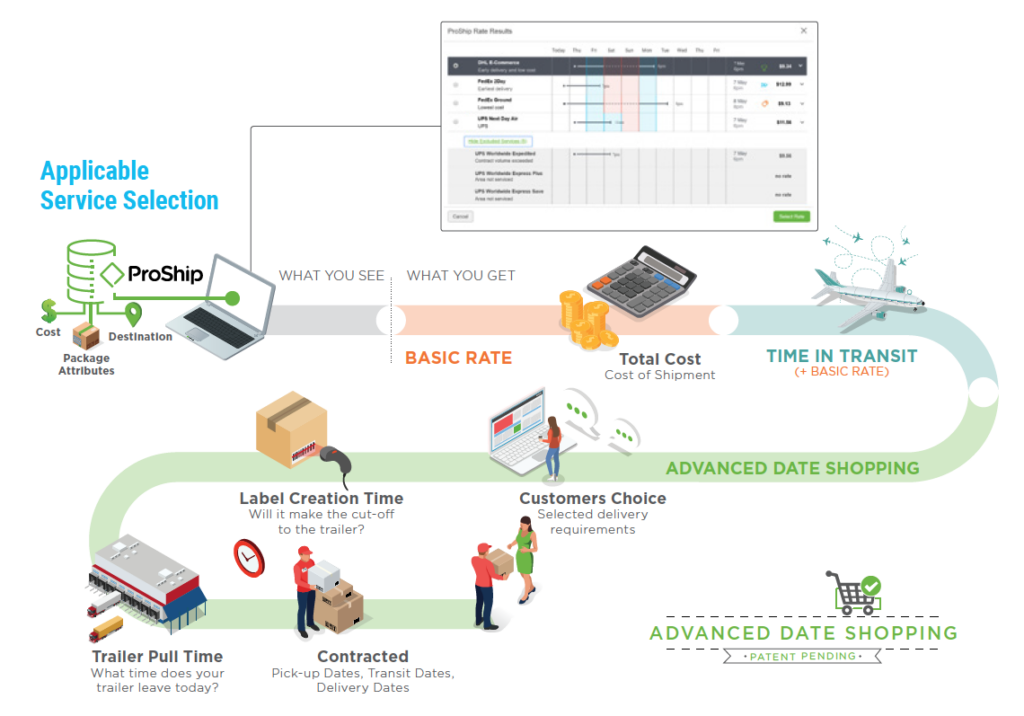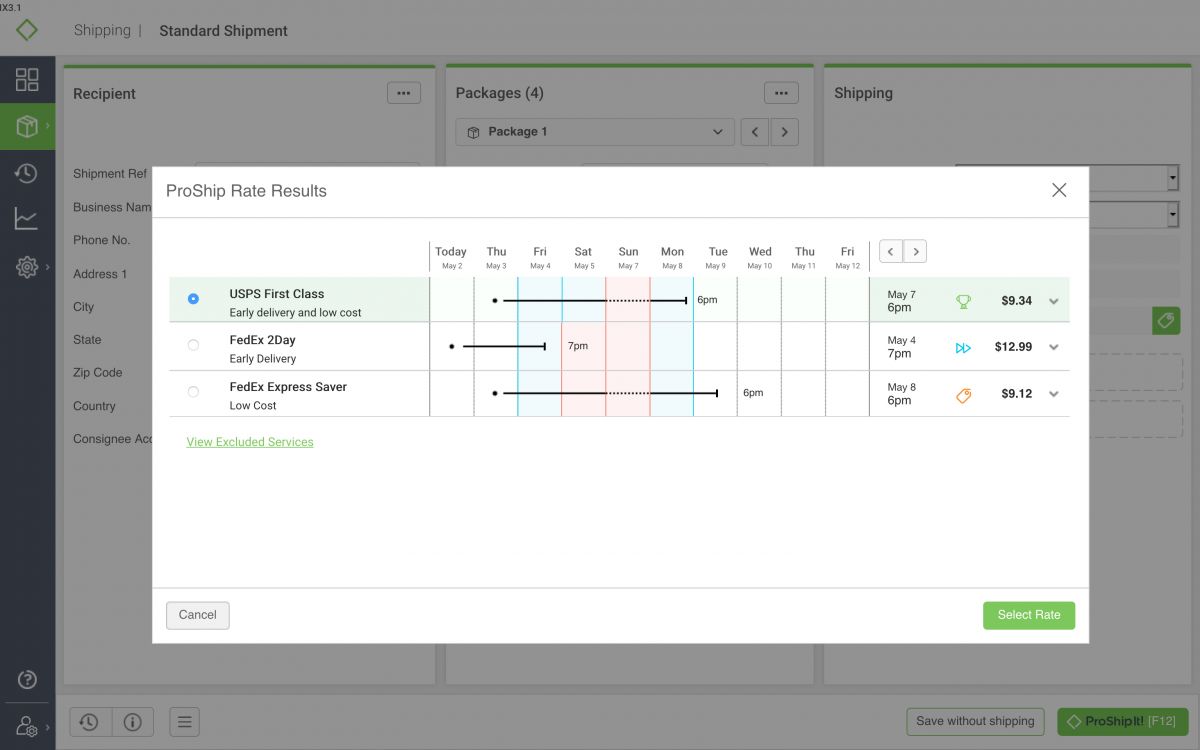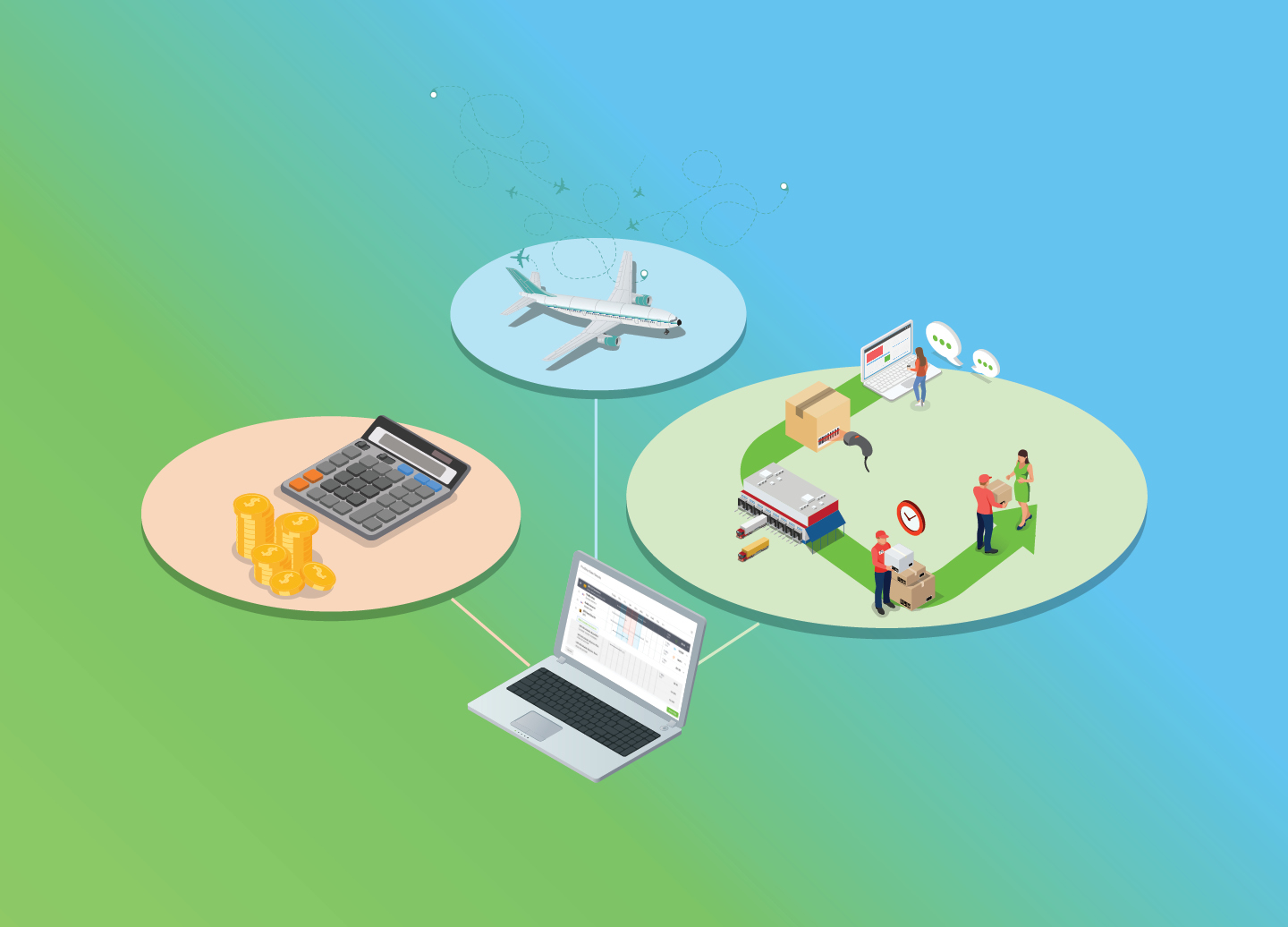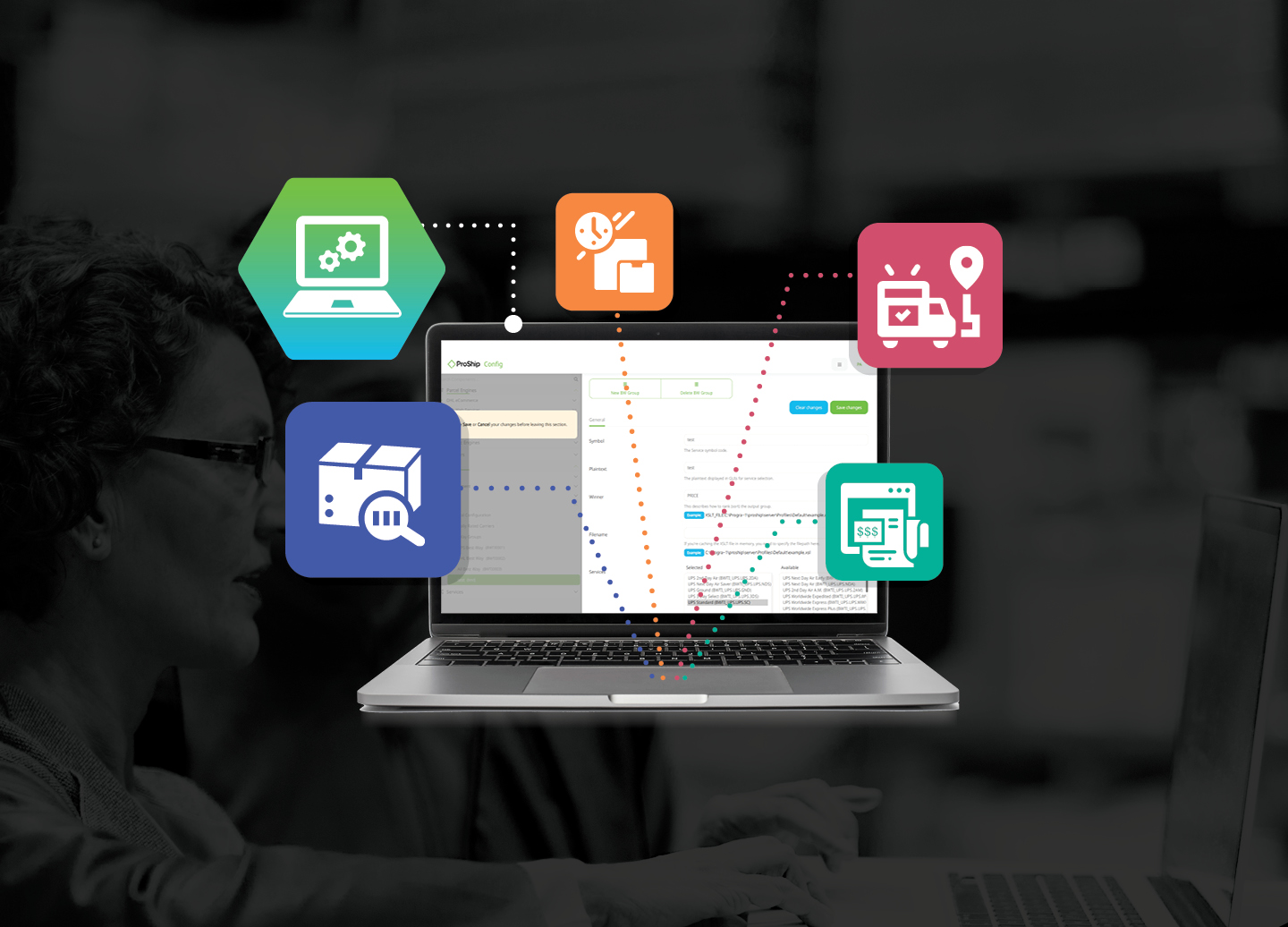In a time where delivery expectations are high, Advanced Date Shopping can reduce errors and improve the Customer Experience
How do you gain new business? Most brands think that they can shout the quality of their goods to win new customers. But after the pandemic accelerated e-commerce and changed the mindset of shoppers, there’s a new reason for why customers choose to do business with a brand: the best Customer Experience (CX). According to a recent study, the top priority for business professionals in the next 5 years is the CX, over pricing and product improvements. In fact, research found that enterprise companies, like those that earn over $1 billion annually, can expect to earn an average of an additional $700 million within 3 years of investing in the CX, because a good CX leads to customers spending more.
So what kind of proven strategies can brands invest in to increase the CX? Increasing flexibility and delivery options for shoppers during checkout.
What is Carrier Rate Shopping?
Fulfilling promises like delivery times will be the key to executing a positive and memorable CX to keep customers coming back as repeat, loyal buyers. While it may seem difficult to predict external factors that can prohibit deliveries from making it to their destinations on time, more often than not, these factors are simply not accounted for. Implementing rate shopping into your shipping process saves both time and money for the customer, and the shipper. Utilizing multiple carriers is also the best way to choose the most cost-effective carrier and service to use. The easiest way to fulfill delivery promises is to work backwards from your promised delivery date and choose a carrier and service that fits within your required variables such as costs, business time-in-transit, label creation time and trailer pull time, as well as carrier contracted dates.

Basic Rate Shopping
Basic rate shopping is the first, and simplest form. This is an automated behind-the-scenes service that will provide the best shipping options while considering total cost and applicable service selection.
Total Cost: The amount that we expect the account holder to pay – this includes item and shipping charges.
Applicable Service Selection: Considers several different secondary factors:
- Rate Shop Groups (or best way groups): A set of carrier services that must be evaluated.
- Cost Normalization: Costs must be normalized across all carriers, modes and services by your shipping system. It is important not to separate the base rate from the assessorial, fuel surcharges and discounted self. In the end, all this rolls up into total cost.
- Service Validation by Destination: There are certain services that do not deliver to all addresses. For example, UPS will not ship to a PO Box, and Next Day Early AM (utilized by UPS and FedEx) will not deliver to all addresses.
- Service Validation by Package Attributes: Some services are residential-only, such as FedEx Home Delivery. The system needs to weed that service out before presenting you with options. Sometimes depending on the package weight, it may or may not qualify for particular services; for example, a 4.5 oz letter wouldn’t be a good fit for LTL.
With basic rate shopping, a simple sort by total cost should finish the business rule. Too many systems look at only part of this equation and not the total – they may not have the ability to take the same transaction and hand it to an LTL service that you would then hand to a small parcel service. There needs to be a lot of initial translation to come back with a normalized set of information.
Time in Transit Rate Shopping
Time in transit rate shopping takes the sorted rate shopping list and filters by business days that the package would be in transit. When using this type of rate shopping, all the previously listed filters (total cost and applicable service selection) are accounted for, but a third is added:
Time in Transit: The number of business days it will take a carrier to transit the package from the shipper to the consignee. This specific data helps many customers meet their needs to reduce the number of express shipments and maximize ground shipping. In addition, this helps ensure customer delivery expectations are met – for example, if a customer selects delivery within 2 business days, you need to know which services meet that expectation, whether that is a UPS 2nd Day Air or a UPS Ground because it’s only 2 days from transit to origin.
Advanced Date Shopping (ADS)

The king of rate shopping – Advanced Date Shopping – includes planning for delivery by a target date. This algorithm includes 9 data sets to maximize cost and time to still meet the promised date.
Normalization: As mentioned in basic rate shopping above, cost normalization, service validation by destination and parcel attributes plus best way groups, are all accounted for in this step.
Basic Rate Shopping: This is where the software sorts by cost.
Time in Transit Rate Shopping: The time it actually takes for the carrier to move a shipment from point A to point B.
Customer Day/Hour of Choice: What expectation does the customer have? Do they expect it on Friday, or today by 5:00pm?
Label Creation Time: When is the label being physically created, and when will it be stamped and put on the trailer?
Trailer Pull Times: This factors in when the trailer physically leaves the hub. For example, if you are shipping something at noon, all the trucks/carriers are still available. If you put a label on a box at 4:15pm, the USPS trailer may have already taken off for the day.
Contracted Pick Up, Transit, and Delivery Days: Each business will have a contract with carriers for which days they will pick up, drop off, and deliver packages for them.
Most importantly, when considering customer day/hour of choice, label creation time, trailer pull time and carrier contracted days, external factors do not get in the way of fulfilling shipment promises. This results in money saved – for example, closer deliveries will use lower-cost carrier services or couriers with the peace of mind that the system will use express services in the event of a longer fulfillment time or longer distance. This allows you to fulfill your customers’ expectations automatically.
What Rate Shopping Business Rule is right for my business?
The first step in answering this question is to start with examining the delivery promise made to the customer. Do they have an expectation of a day, or a by a specific hour? To get the package to the customer by the promised time, factors such as contracted pickup, transit and delivery dates need to be considered. Dependent on the label creation time and the pull time, the shipping software will process all these factors and determine which carrier service will ensure the shipment delivers on that promise. It considers holidays, weekends and non-contracted dates all in the same algorithm.
Today’s shopping expectations are constantly evolving. And while external factors, like the pandemic, have had an effect, innovative shopping and shipping technology are helping to shape the expectations and standards for a positive CX. Modern shoppers are demanding fulfilled shipping promises, complete tracking capabilities and a seamless positive CX. Advanced Date Shopping, only available via ProShip multi-carrier shipping software, is an essential tool to ensure that both the customer and the shipper have both a cost and time-efficient shipping experience.
Learn how ProShip can transform your carrier rate shopping strategy
Schedule a demo with a ProShip shipping expert to learn more about how carrier rate shopping can benefit your business by saving money, improving efficiency and delivering on customer delight.

 Back to Blog
Back to Blog





